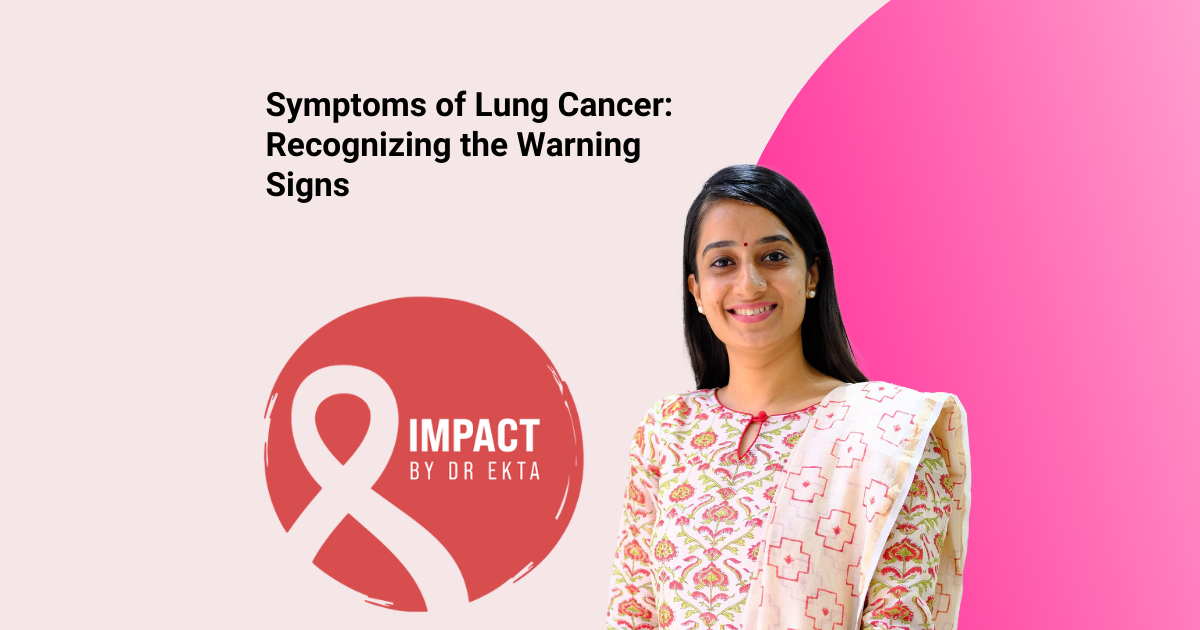As an oncologist, I often encounter patients who are unaware of the early symptoms of lung cancer, which can significantly delay diagnosis and treatment. Lung Cancer is a severe condition, and early detection is crucial for improving outcomes. In this blog, I aim to educate you about the symptoms of lung cancer so you can recognize the warning signs and seek medical attention promptly.
Understanding Lung Cancer
Lung cancer begins in the lungs, the primary organs responsible for breathing. It is categorized into two main types: non-small cell lung cancer (NSCLC) and small cell lung cancer (SCLC). NSCLC is the most common type, accounting for about 85% of cases, while SCLC is less common but more aggressive.
Early Symptoms of Lung Cancer
Early symptoms of lung cancer can often be subtle and easily mistaken for other less severe conditions. However, being aware of these symptoms can make a significant difference in early detection. Here are some of the primary symptoms of lung cancer:
- Persistent Cough: A persistent cough that doesn’t go away or worsens over time is one of the most common symptoms of lung cancer. If you have a cough that lasts for more than a few weeks, especially if it produces blood or rust-colored sputum, it’s essential to see a doctor.
- Chest Pain: Chest pain that is constant and may worsen with deep breathing, coughing, or laughing can be a sign of lung cancer. This pain can also spread to the shoulder or back.
- Shortness of Breath: Difficulty breathing or shortness of breath can occur if a lung tumor blocks or narrows an airway or if fluid builds up around the lung (pleural effusion).
- Wheezing: A wheezing sound when you breathe may indicate a blockage in the airways caused by a tumor.
- Hoarseness: Changes in your voice, such as becoming hoarse, can be a symptom of lung cancer. This occurs when the tumor affects the nerves that control the larynx (voice box).
- Unexplained Weight Loss: Sudden and unexplained weight loss can be a warning sign of lung cancer. This symptom is common in many types of cancer and should not be ignored.
- Loss of Appetite: A decrease in appetite can also accompany lung cancer, contributing to weight loss.
- Fatigue: Persistent fatigue that doesn’t improve with rest can be a symptom of lung cancer, as the body is expending more energy to fight the disease.
Advanced Symptoms of Lung Cancer
As lung cancer progresses, it may cause more severe symptoms. These include:
- Bone Pain: If lung cancer spreads to the bones, it can cause significant pain, particularly in the back, ribs, or hips.
- Headache and Neurological Symptoms: If the cancer spreads to the brain, it can cause headaches, dizziness, balance issues, or even seizures.
- Swelling in the Neck or Face: Swelling in the neck or face can occur if a tumor presses on the superior vena cava, a large vein that carries blood from the head and arms to the heart.
- Frequent Infections: Recurrent infections such as bronchitis or pneumonia may be a symptom of lung cancer, as the tumor can obstruct airways and make the lungs more susceptible to infection.
The Importance of Early Detection
Recognizing the symptoms of lung cancer early can lead to a more favorable prognosis. When lung cancer is detected in its early stages, treatment options such as surgery, radiation therapy, and chemotherapy are more likely to be effective. However, many patients do not experience noticeable symptoms until the disease has progressed, which underscores the importance of regular medical check-ups, especially for those at high risk.
Risk Factors for Lung Cancer
Understanding the risk factors can help you assess your likelihood of developing lung cancer and take proactive measures. Key risk factors include:
- Smoking: Smoking is the leading cause of lung cancer, responsible for approximately 85% of cases. Both active smoking and exposure to secondhand smoke increase the risk.
- Exposure to Radon Gas: Radon is a naturally occurring radioactive gas that can accumulate in homes and buildings. Long-term exposure to high levels of radon can increase the risk of lung cancer.
- Asbestos Exposure: Occupational exposure to asbestos, a material used in construction and manufacturing, is a known risk factor for lung cancer.
- Family History: A family history of lung cancer can increase your risk, suggesting a genetic predisposition.
- Air Pollution: Prolonged exposure to polluted air, particularly in urban areas, can contribute to the development of lung cancer.
When to See a Doctor
If you experience any of the symptoms of lung cancer, especially if you have risk factors such as a history of smoking, it’s crucial to see a doctor promptly. Early diagnosis can lead to more effective treatment and a better chance of recovery. Your doctor may recommend imaging tests such as a chest X-ray or CT scan, and if needed, a biopsy to confirm the diagnosis.
Conclusion
Being aware of the symptoms of lung cancer and recognizing the warning signs can make a significant difference in early detection and treatment outcomes. If you or a loved one experiences any of these symptoms, don’t hesitate to seek medical advice. As an oncologist, I cannot stress enough the importance of early detection in the fight against lung cancer. Stay vigilant, and take proactive steps to protect your lung health.
Remember, the symptoms of lung cancer can be easily overlooked, but understanding and recognizing them can save lives. If you have any concerns or questions, consult with your healthcare provider to get the necessary screening and support.

